Mutation of the 3-Phosphoinositide-Dependent Protein Kinase 1 (PDK1) Substrate-Docking Site in the Developing Brain Causes Microcephaly with Abnormal Brain Morphogenesis Independently of Akt, Leading to Impaired Cognition and Disruptive Behaviors
- PMID: 27644329
- PMCID: PMC5108884
- DOI: 10.1128/MCB.00230-16
Mutation of the 3-Phosphoinositide-Dependent Protein Kinase 1 (PDK1) Substrate-Docking Site in the Developing Brain Causes Microcephaly with Abnormal Brain Morphogenesis Independently of Akt, Leading to Impaired Cognition and Disruptive Behaviors
Abstract
The phosphoinositide (PI) 3-kinase/Akt signaling pathway plays essential roles during neuronal development. 3-Phosphoinositide-dependent protein kinase 1 (PDK1) coordinates the PI 3-kinase signals by activating 23 kinases of the AGC family, including Akt. Phosphorylation of a conserved docking site in the substrate is a requisite for PDK1 to recognize, phosphorylate, and activate most of these kinases, with the exception of Akt. We exploited this differential mechanism of regulation by generating neuron-specific conditional knock-in mice expressing a mutant form of PDK1, L155E, in which the substrate-docking site binding motif, termed the PIF pocket, was disrupted. As a consequence, activation of all the PDK1 substrates tested except Akt was abolished. The mice exhibited microcephaly, altered cortical layering, and reduced circuitry, leading to cognitive deficits and exacerbated disruptive behavior combined with diminished motivation. The abnormal patterning of the adult brain arises from the reduced ability of the embryonic neurons to polarize and extend their axons, highlighting the essential roles that the PDK1 signaling beyond Akt plays in mediating the neuronal responses that regulate brain development.
Copyright © 2016, American Society for Microbiology. All Rights Reserved.
Figures
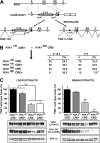
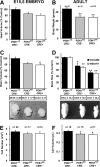
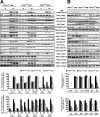

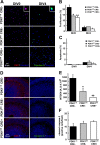




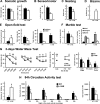
Similar articles
-
In vivo role of the PIF-binding docking site of PDK1 defined by knock-in mutation.EMBO J. 2003 Aug 15;22(16):4202-11. doi: 10.1093/emboj/cdg407. EMBO J. 2003. PMID: 12912918 Free PMC article.
-
Fine-tuning the intensity of the PKB/Akt signal enables diverse physiological responses.Cell Cycle. 2014;13(20):3164-8. doi: 10.4161/15384101.2014.962954. Cell Cycle. 2014. PMID: 25485494 Free PMC article.
-
High resolution crystal structure of the human PDK1 catalytic domain defines the regulatory phosphopeptide docking site.EMBO J. 2002 Aug 15;21(16):4219-28. doi: 10.1093/emboj/cdf437. EMBO J. 2002. PMID: 12169624 Free PMC article.
-
Phosphoinositide-dependent protein kinase 1, a sensor of protein conformation.Trends Biochem Sci. 2004 Mar;29(3):136-42. doi: 10.1016/j.tibs.2004.01.005. Trends Biochem Sci. 2004. PMID: 15003271 Review.
-
The choreography of protein kinase PDK1 and its diverse substrate dance partners.Biochem J. 2023 Oct 11;480(19):1503-1532. doi: 10.1042/BCJ20220396. Biochem J. 2023. PMID: 37792325 Review.
Cited by
-
The Impact of the PI3K/Akt Signaling Pathway in Anxiety and Working Memory in Young and Middle-Aged PDK1 K465E Knock-In Mice.Front Behav Neurosci. 2020 May 8;14:61. doi: 10.3389/fnbeh.2020.00061. eCollection 2020. Front Behav Neurosci. 2020. PMID: 32457586 Free PMC article.
-
Impact of Social Isolation on the Behavioral, Functional Profiles, and Hippocampal Atrophy Asymmetry in Dementia in Times of Coronavirus Pandemic (COVID-19): A Translational Neuroscience Approach.Front Psychiatry. 2020 Nov 24;11:572583. doi: 10.3389/fpsyt.2020.572583. eCollection 2020. Front Psychiatry. 2020. PMID: 33329110 Free PMC article.
-
Conditional Deletion of PDK1 in the Forebrain Causes Neuron Loss and Increased Apoptosis during Cortical Development.Front Cell Neurosci. 2017 Oct 20;11:330. doi: 10.3389/fncel.2017.00330. eCollection 2017. Front Cell Neurosci. 2017. PMID: 29104535 Free PMC article.
-
Capturing Autoinhibited PDK1 Reveals the Linker's Regulatory Role, Informing Innovative Inhibitor Design.J Chem Inf Model. 2024 Oct 14;64(19):7709-7724. doi: 10.1021/acs.jcim.4c01392. Epub 2024 Sep 30. J Chem Inf Model. 2024. PMID: 39348509 Free PMC article.
-
PI3K Driver Mutations: A Biophysical Membrane-Centric Perspective.Cancer Res. 2021 Jan 15;81(2):237-247. doi: 10.1158/0008-5472.CAN-20-0911. Epub 2020 Oct 12. Cancer Res. 2021. PMID: 33046444 Free PMC article. Review.
References
LinkOut - more resources
Full Text Sources
Other Literature Sources
Molecular Biology Databases
Research Materials
Miscellaneous
